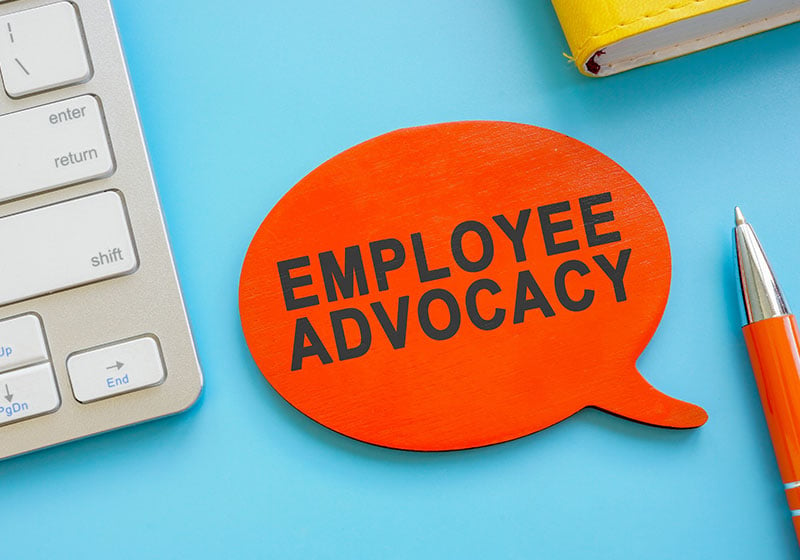Table of Contents
We tend to imagine communication channels, content strategies and marketing plans as levers that businesses can pull like a joystick. Switches that are either on or off, ready to be flipped as and when the plan demands.
But there’s another less well-known but equally powerful lever that firms can activate: employee advocacy, also known as employee ambassadorship or employee storytelling.
In this article, I’m going to explain what employee advocacy is and how you can use it in your company. But before I do, we need to refresh our memories of a few fundamental concepts in marketing communication.
A brief overview of marketing communication levers
In marketing, we use a mix of content and channels to interact with audiences. These can be broken down into earned, owned and paid media, which together make up the digital marketing trifecta.
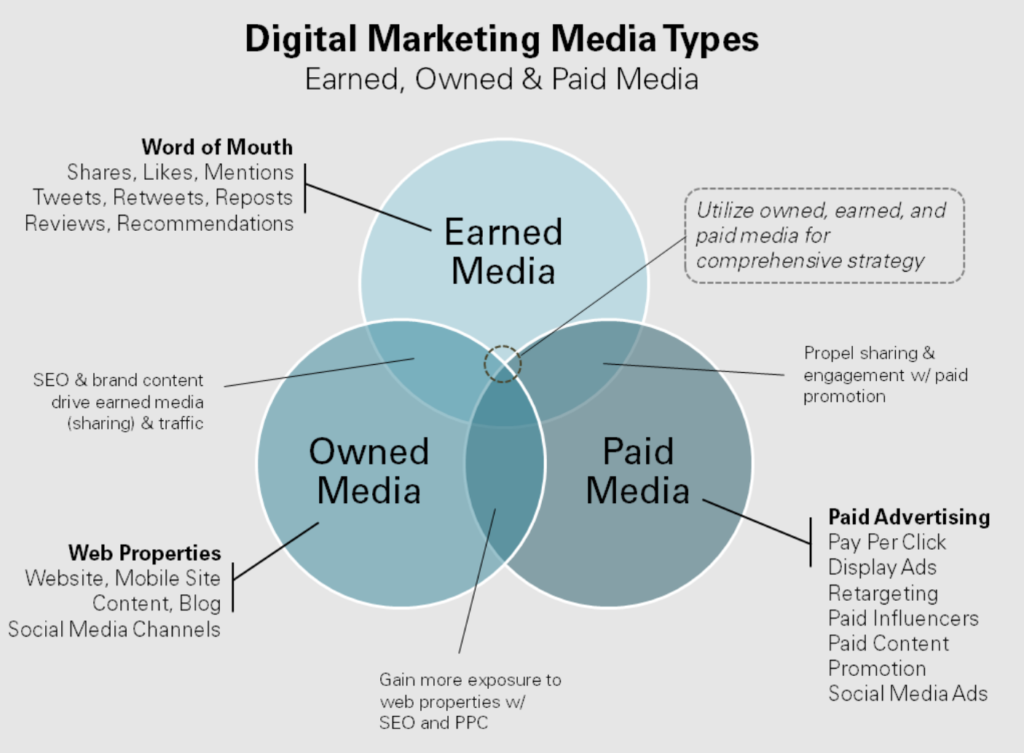
Let’s quickly remind ourselves of each of these media types and their pros and cons.
Owned media
Definition: this is media that a company owns and controls directly.
- Examples:
- Company website
- Company blog
- Newsletter
- Official social profiles (Facebook, Instagram, LinkedIn, etc.)
- Company or brand apps
- Advantages:
- Complete control of the content and its message
- Relatively lower costs compared to other media
- Helps build a direct relationship with customers
- Disadvantages:
- Slower growth than paid media
- Takes time to get meaningful results
- Low credibility and trustin the eyes of the audience (seen as biased)
Paid media
Definition: channels where a firm pays for visibility and traffic.
- Examples:
- Google Ads
- Social media advertising (ads on Facebook, Instagram or LinkedIn)
- Banner ads on websites and digital platforms
- Influencer and creator sponsorships
- TV, radio and newspaper ads
- Advantages:
- Immediate visibility
- Precise targeting possible (age, interests, location etc.)
- Effective for quickly acquiring new customers
- Disadvantages:
- Can be costly (but depends on the platforms used and campaign goals)
- Doesn’t build a lasting relationship with the audience (only lasts as long as the paid campaign airs)
- Results can disappear – or at least fall off significantly – when you stop paying
Earned media
Definition: all content and visibility generated organically through reviews, shares or mentions by the public and the media.
- Examples:
- Blog posts or newspaper articles (unsponsored)
- Shares and mentions on social media by users
- Reviews on platforms like Trustpilot, Google Reviews and TripAdvisor
- Word of mouth
- Advantages:
- More credibility than other media (because it’s seen as unbiased)
- Cheaper than paid media
- Can achieve viral exposure
- Disadvantages:
- Can’t be directly controlled (it’s what people say about us when we’re not in the room )
- May include negative reviews (even bad press is earned media 😉 )
- Hard to predict or rapidly scale
Traditionally, best practice has been to combine all three types of media as part of an integrated, balanced and effective marketing strategy. But lately, a fourth type of media has emerged that all firms should seriously consider.
The benefits of employee advocacy
That fourth type of media is employed media, which also goes by the name of employee advocacy, employee ambassadorship or employee storytelling.
Employee advocacy turns the social media presence of a company’s workforce into a powerful marketing tool.
We call the output from this approach employed media: corporate content posted by employees through their own social profiles (say on LinkedIn or Instagram) with the aim of amplifying impressions, engagement and sharing.
Employed media is a powerful asset because:
- It’s cost-effective. Employed media isalmost free, unlike paid media. By involving just 100 employees and their networks, you can reach an impressive audience…

- It strengthens trust in the brand. We know that genuine stories told about a company by employees are seen in a much better light than traditional communications coming directly from the company itself. The same goes for talent attraction, because employee storytelling gives potential recruits a narrative on which to judge the organisation and decide whether it fits their own values.
- It improves company culture. Advocacy is a way to involve employees in corporate storytelling and strengthen their sense of belonging to something bigger and more meaningful.
For a (non exhaustive) list of other benefits, check out this infographic by Giraffe Social.
How to design an employee advocacy plan
I hope I’ve convinced you of the value employee advocacy. But now you’re probably wondering how you go about actually implementing it.
It’s a great question. In fact, there are six key steps to follow if you want to turn staff into powerful brand storytellers and ambassadors.
1. Set your objectives
Successful employee advocacy plan starts by asking the question “why?”. In other words, what you hope to get out of it. There could be a variety of reasons:
- To strengthen branding in general and to enhance employee attraction and employer branding in particular (in other words, the company’s image as an employer).
- To boost the company’s reputation overall.
- To amplify brand messaging.
- To increase employees’ engagement and identification with the company.
For employees themselves, the benefits can be significant, as illustrated by the PostBeyond infographic below. These include growing professional networks, generating more visibility on socials and enhancing personal branding.
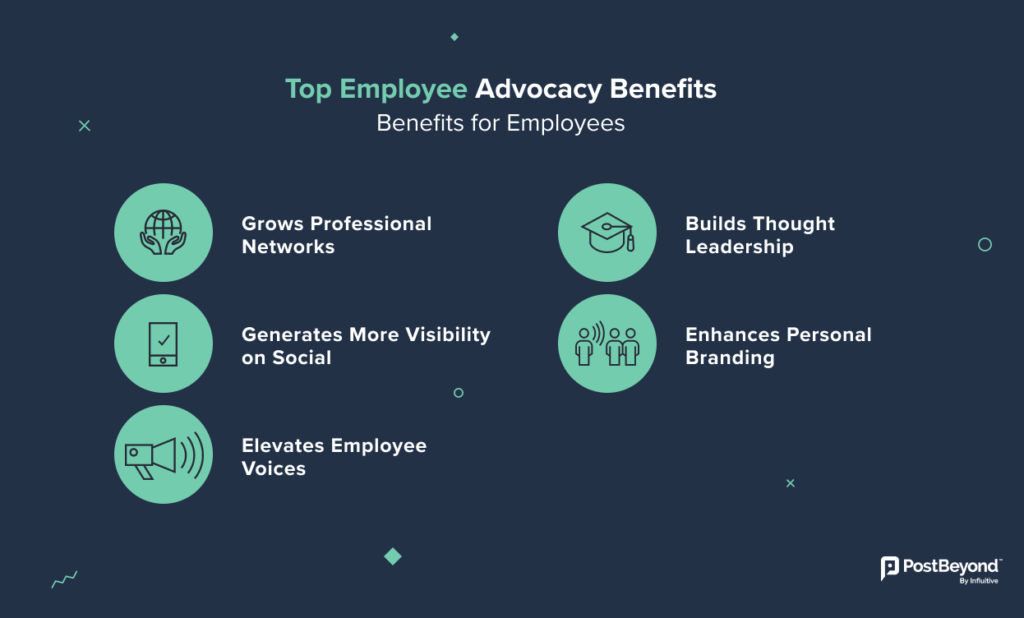
The list of possible objectives is almost endless, so choose a few and stick to them, bearing in mind that these will determine the key performance indicators used to evaluate the effectiveness of your employed media efforts.
2. Select and onboard employees
Once you’ve set your objectives, it’s time to carefully select and onboardthe people in your company who you think would make good ambassadors. There are different ways of doing this:
- First come, first served: share a message with staff (email, newsletter or post on company intranet) explaining the initiative and asking for volunteers. The first to reply are the first to take part.
- Pre-selection: although more time consuming, you can also pre-select employees, picking those who are most present and active on social media. A bit stalkery, perhaps, but it reduces the risk of onboarding people who are unsuitable for the task.
3. Choose the supporting technology
Employee advocacy plans are almost always developed using specialised tools that automate much of the process.
Employees involved connect these tools to their social media profiles (LinkedIn mainly, but also X, Facebook, Instagram and even TikTok) and are notified of content that social media managers have provided for posting.
The leading employee advocacy tools out there are GaggleAMP, Ambassify, Sociabble and Oktopost. These are paid solutions, so compare their costs and features carefully to find the right one for your company’s budget and objectives.
4. Produce an editorial calendar
As we touched on above, it’s vital to have a well-structured editorial calendar for the content you want your employees to share on social media.
Bear in mind that it’s important to give employees a degree of freedom in what they post while also ensuring that their output is in line with the company’s social media policy.
Once you’ve finalised your editorial plan, upload it to your employee advocacy platform. Now, in a matter of clicks, your employees can become content creators and trusted ambassadors for your company.
Speaking of content: if you need tips on creating effective digital content, check out this article by Diego Fontana.
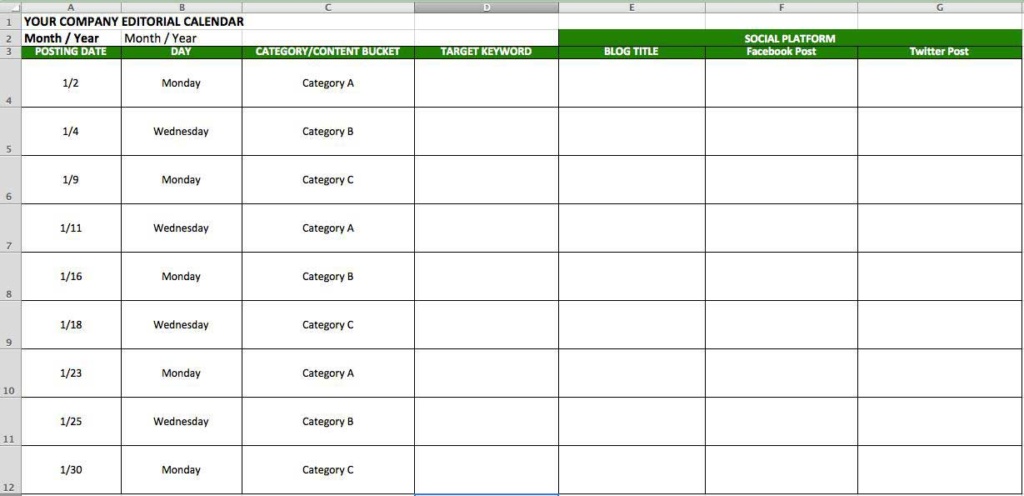
5. Measure and analyse
Last but not the least… measurement! Understanding how your campaign is performing is important to make sure you’re heading in the right direction, as well as for reporting to internal stakeholders.
There are many metrics and KPIs for measuring the effectiveness of your employee advocacy plan, and they vary depending on its objectives.
We can break down these metrics based on which part of the marketing funnel they cover: TOFU, MOFU or BOFU.
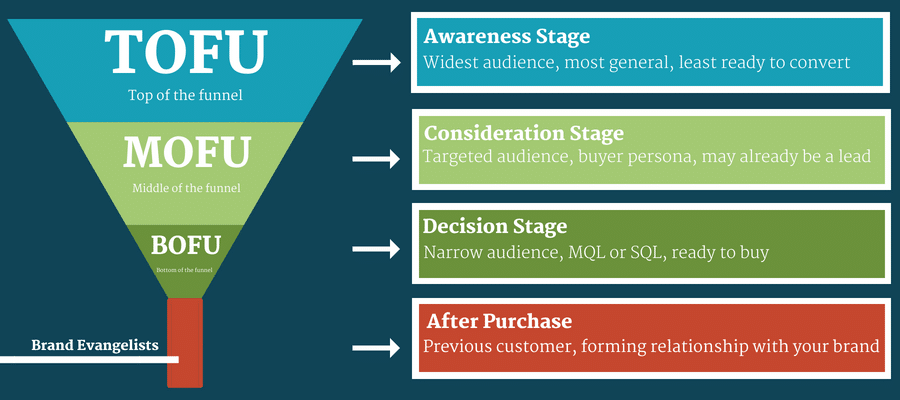
- TOFU (top of the funnel) metrics:
- Share of voice – SOV = (% of brand mentions / % of industry mentions) × 100
- Net sentiment score = (positive comments – negative comments) × 100 or on a scale from -100 to +100
- Cost per thousand / mille – CPM = (total budget of employee advocacy campaign / total number of impressions generated) × 1000
- MOFU (middle of the funnel) metrics:
- Engagement rate = (total engagement / number of followers) × 100
- Cost per click = total cost of the employee advocacy campaign / number of clicks generated by it
- Reach = number of people reached by a given piece of content.
- BOFU (bottom of the funnel) metrics:
- Click-through rate – CTR = (number of clicks / number of impressions) × 100
- Conversion rate optimisation – CRO = (actions [transactions] / unique visits) × 100
- Customer acquisition cost – CAC = total cost of new customers acquired / number of new customers acquired in a given period
As you can see, there are all sorts of metrics to choose from. But remember: key performance indicators are… key. In other words, make sure you choose the right metrics for your goals.
Employed media in your marketing and communications mix
I hope I’ve convinced you to involve your employees in your marketing and communications plan. The potential benefits for you – and them – are enormous.
And if you do create an employee advocacy plan, let me know how it goes.

